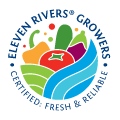Are Nanotechnology and Food a Recipe for Success?

Nanotechnology is a hot topic now that our technology level has caught up with the dreams of scientists and science fiction writers past. Nanotechnology, or more specifically nanoparticles, has recently emerged in the food industry and has a variety of different applications, including the following.
- Food packaging—Food packaging that is infused with nanoparticles is airtight, preventing spoilage during transportation and storage.
- Food development —Many types of food, from processed cheese products and cream cheese to donuts and coffee creamer already contain nanoparticles. It is often added to improve and enhance the look of the product such as titanium dioxide nanoparticles that make gummy candies opaque without changing the texture of the food.
- Foodborne pathogen detection—Nanoparticles can detect the presence of common foodborne bacteria such as Salmonella, coli, and Listeria, keeping consumers safer and preventing recalls.
- Extending the shelf life of food—Containers infused with silver nanoparticles can help extend the shelf life of food/beverages for longer than their counterparts. Silver is naturally antibacterial and prevents mold and fungus from growing.
Potential Benefits and Risks
As mentioned, there are many potential benefits of nanotechnology. Food can get stored longer, enabling distributors to expand their markets into areas that might currently be classified as a food desert. Nanoparticle sensors can prevent foodborne illness outbreaks by detecting the problem before the food ever reaches the shelves of local grocery stores.
Some of these foodborne pathogens can quickly spread through a warehouse or preparation area. Detecting the problem early prevents cross-contamination that could cost a food company thousands of dollars in recalls and reparations.
However, some consumers are concerned that these nanoparticles have entered the food chain too quickly and haven’t been studied enough to ensure that they’re safe. Studies have shown that some nanoparticles such as zinc oxide are hazardous to human health. The silver particles, hailed for their antibacterial abilities, reportedly can damage liver and brain cells.
According to Michael Berger, Editor of Nanowerk, “the jury is still out” on how safe nanotechnology is in food. He mentions, “The problem is that there aren’t any clear guidelines yet on how to assess the safety of nanotechnology applications in food. The European Food and Safety Authority has recently published a guidance that gives practical suggestions on the types of testing that are needed and the methods that can be applied.”
One risk to consider is that nanoparticles might interact with the body in unforeseen ways. Their small size, between zero and 100 nanometers, allows them to pass easily through tissue, affecting the organs directly. There haven’t been enough studies to determine how safe these nanoparticles are, but most consumers probably don’t even realize there are already nanoparticles in their food. As more studies are conducted, we’ll have a better understanding of their applications and limits.
Looking Toward the Future
We’ve barely scratched the surface when it comes to nanotechnology in the food industry. Nano-sized salt particles might add the same sort of flavor to food while reducing the amount of overall sodium. Nano-infused packaging could detect when a perishable food has started to spoil, preventing cases of food poisoning that happen when a steak or chicken breast look and smell okay but aren’t safe to eat.
In addition, foods could get augmented with nano-vitamins that are delivered to our bodies more efficiently. Nanoparticles of fertilizer could be more readily absorbed by plant roots, reducing the amount of pollution and runoff from farms and fields.
This is clearly just the beginning of nanotechnology in the food industry.
Source: www.foodqualityandsafety.com


